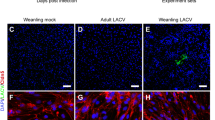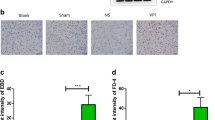Abstract
Japanese encephalitis (JE) virus principally infects neuron systems of animals and causes severe encephalitis. The mechanism by which the virus enters the central nervous system (CNS) from the circulatory system remains elusive. In this study, electron-microscopic techniques have been used to determine these sequential events in the suckling mouse brain. The results indicate that (1) endocytosis is employed when JE virus is transported across the cerebral blood vessels (CBV) and breaches the blood-brain barrier (BBB). (2) Uncoated vesicles, which may be caveolae, and coated vesicles are involved in the endocytic and transcytotic vesicles of capillary endothelium and pericytes. (3) The JE virus is transported in endocytic vesicles across the endothelial cells and pericytes. (4) Endocytosis and transportation of JE virus in pericytes seems to be the same as that in endothelial cells. (5) The interaction of the viral envelope and cell membrane of endothelial cells and pericytes plays an important role in the endocytosis. This study elucidates the infectious processes of JE virus entering the CNS from the circulatory system in the mouse brain.
Similar content being viewed by others
Author information
Authors and Affiliations
Additional information
Received: 9 September 1997 / Accepted: 22 April 1998
Rights and permissions
About this article
Cite this article
Liou, ML., Hsu, CY. Japanese encephalitis virus is transported across the cerebral blood vessels by endocytosis in mouse brain. Cell Tissue Res 293, 389–394 (1998). https://doi.org/10.1007/s004410051130
Issue Date:
DOI: https://doi.org/10.1007/s004410051130




